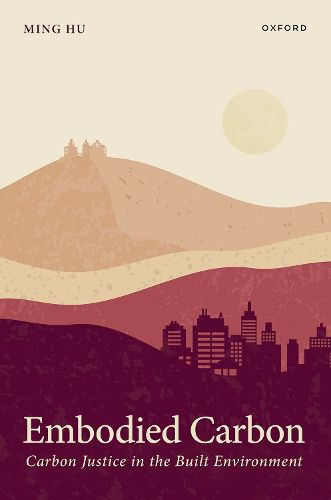Readings Newsletter
Become a Readings Member to make your shopping experience even easier.
Sign in or sign up for free!
You’re not far away from qualifying for FREE standard shipping within Australia
You’ve qualified for FREE standard shipping within Australia
The cart is loading…






The global implications surrounding embodied carbon - the total greenhouse gas emissions associated with the production, transportation, assembly, and deconstruction of building materials - are often overlooked. Embodied Carbon challenges the conventional focus on operational carbon, focusing on the inequalities between the Global North and South. Part I traces the historical evolution of embodied carbon, clarifying its definitions, components, measurement and counting methods, and the critical connection between embodied carbon and climate change. Part II delves into the complexities and hidden biases that distort our understanding and approaches to sustainability, particularly the global North bias and the overreliance on high-tech solutions. It highlights how these biases perpetuate environmental disparities and marginalise low-tech, accessible solutions that could benefit broader segments of society.In Part III, we shift to current global efforts and potential pathways forward. Hu offers a comprehensive analysis of existing regulations and policies related to embodied carbon and proposes a low-tech, low-process approach that draws from traditional and indigenous knowledge. The final chapter synthesizes multidisciplinary expert perspectives, offering a new framework for creating equitable and effective solutions to reduce embodied carbon emissions.
$9.00 standard shipping within Australia
FREE standard shipping within Australia for orders over $100.00
Express & International shipping calculated at checkout
The global implications surrounding embodied carbon - the total greenhouse gas emissions associated with the production, transportation, assembly, and deconstruction of building materials - are often overlooked. Embodied Carbon challenges the conventional focus on operational carbon, focusing on the inequalities between the Global North and South. Part I traces the historical evolution of embodied carbon, clarifying its definitions, components, measurement and counting methods, and the critical connection between embodied carbon and climate change. Part II delves into the complexities and hidden biases that distort our understanding and approaches to sustainability, particularly the global North bias and the overreliance on high-tech solutions. It highlights how these biases perpetuate environmental disparities and marginalise low-tech, accessible solutions that could benefit broader segments of society.In Part III, we shift to current global efforts and potential pathways forward. Hu offers a comprehensive analysis of existing regulations and policies related to embodied carbon and proposes a low-tech, low-process approach that draws from traditional and indigenous knowledge. The final chapter synthesizes multidisciplinary expert perspectives, offering a new framework for creating equitable and effective solutions to reduce embodied carbon emissions.